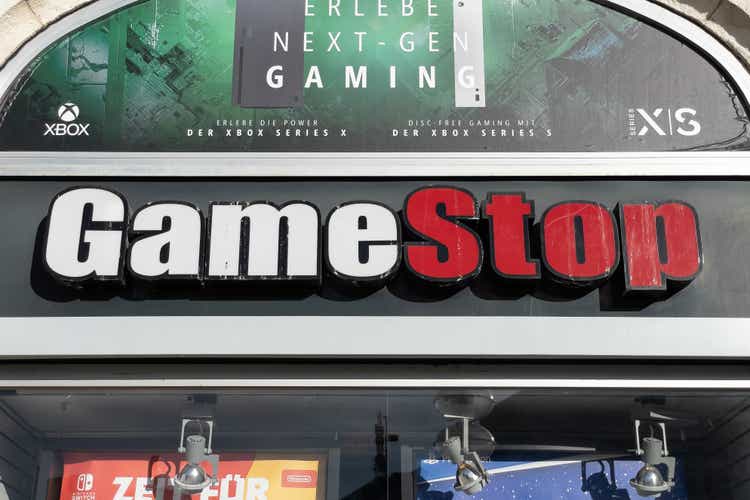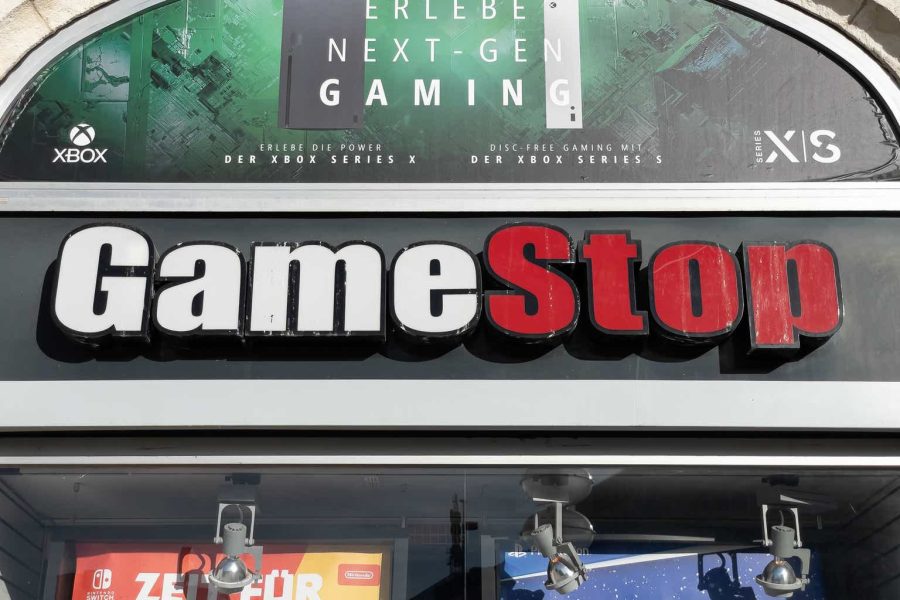Summary:
- GameStop stock rallies after Roaring Kitty, the trader who sparked the meme stock frenzy, tweets for the first time in three years.
- Walgreens spiked amid report that the company is reaching out to potential buyers for its Boots chain in the UK.
- Check out BofA’s list of pain trades for bulls and bears.
Dennis Diatel Photography
Listen below or on the go on Apple Podcasts and Spotify
Roaring Kitty tweets and GameStop is off to the races. (0:16) Consumer expecting stickier inflation ahead. (2:15) The best pain trades for bulls and bears. (4:53)
This is an abridged transcript of the podcast.
Team meme is back on the case.
GameStop (NYSE:GME) is reminding the market of 2021 with a sudden rally that sent shares up more than 100% at one point this morning. They are now off the highs, up 60%.
The spark today was the return of Keith Gill, AKA Roaring Kitty, the trader whose thesis on GME lit the fuse on the meme frenzy three years ago. GameStop bulls piled in with a familiar zeal and the aim of punishing shorts.
Roaring Kitty tweeted for the first time in nearly three years. He simply posted a meme of a man leaning forward, but GME fans got the message that he was taking notice of the recent action.
Hammerstone Markets notes that “Gill never sold his GameStop shares, which many people assumed he did (hence his silence).”
“Gill’s GME stake was worth $48M at the height of the GameStop meme bubble. If he still owns all 200K shares that he had in 2021, his stake is worth $5.4M on this morning’s self-generated rally.”
The Kitty also got the Apes fired up.
AMC (AMC), another protagonist in the meme stock surge, is up 30%. Other highly-shorted consumer stocks seeing sharp gains include Newegg Commerce (NEGG), Beyond (BYON), iRobot (IRBT), Children’s Place (PLCE), VinFast Auto (VFS), Canoo (GOEV), Petco Health and Wellness (WOOF), and Tupperware Brands (TUP).
The GameStop run started on May 2 with a jump of 16% on volume of more than 8 million shares, about 3x higher than the previous session. Volume topped 36 million on Friday, even though shares shed 3%.
The move has the hallmarks of a short squeeze, with reports of a dearth of shares available to borrow. But those squeezes tend to rip faster, and this has been more of a slower build. Still, financial analytics firm Ortex says short sellers have lost $800 million on paper so far.
In today’s trading
The major averages are little changed, with the Nasdaq (COMP.IND) ahead. Stocks gave up earlier gains, while yields cut losses, following an indication consumers are prepping for stickier inflation.
The New York Fed’s April Survey of Consumer Expectations showed median inflation expectations jumped to 3.3% from 3.0% for one year ahead, its highest reading year-to-date, but below the 12-month trailing average of 3.5%. The median inflation expectation for three years ahead eased to 2.8% from 2.9%, while the median expectation for inflation five years from now climbed to 2.8% from 2.6%.
While not usually market-moving, the report serves as an inflation amuse bouche ahead of the PPI appetizer on Tuesday and Wednesday’s CPI main course.
Among active stocks
Jefferies initiated coverage of Nvidia (NVDA) with a Buy rating. Analysts said it is too early to sift out winners and losers in the AI basket yet, but Nvidia is their favorite.
Meanwhile, Peter Callahan, tech, media, and telecom specialist at Goldman, says investor sentiment on Nvidia is “decidedly upbeat” and is the most loved name in the sector along with Amazon (AMZN) as far as the trading desk is concerned.
Arm Holdings (ARM), a unit of SoftBank (OTCPK:SFTBY) (OTCPK:SFTBF), is working on developing its own artificial intelligence chips, with plans to build the first prototype by spring 2025. That’s according to the Japanese daily Nikkei.
The U.K.-based chip designer will set up an AI chip division and plans to start mass production in the fall of next year, which will be handled by contract manufacturers.
Wedbush said that the
partnership between Apple (AAPL) and OpenAI appears to be a done deal, and an AI foundation for the iPhone 16 is forming. The firm maintained its Outperform rating and a $250 price target on Apple’s stock.
And Walgreens Boots (WBA) quickly spiked amid a report that the company is reaching out to potential buyers for the $8.8 billion Boots drugstore chain in the UK. Walgreens (WBA) is working with advisers to hold early-stage talks with possible buyers for the chemist, according to a Bloomberg report.
In other news of note
Focus for the Magnificent 7 stocks tends towards performance, valuation, and earnings. But Goldman Sachs also notes reinvestment.
Tony Pasquariello, head of hedge fund coverage, says “the biggest of the big continue to demonstrate their considerable muscle on two key fronts: return-of-capital… and redeployment-of-capital.”
Total capex and R&D for the group: Apple (AAPL), Amazon (AMZN), Alphabet (GOOG) (GOOGL), Meta (META), Microsoft (MSFT), Nvidia (NVDA), and Tesla (TSLA) is expected to be $348 billion.
Here’s “another way to frame it: the Magnificent 7 reinvests 61% of their operating free cash flow back into capex + R&D… that’s tracking to be 3x” the other 493 in the S&P 500.
And in the Wall Street Research Corner
With everyone leaning one way, markets have a way of delivering the unexpected. Known as pain trades, these shifts that leave a large swathe of investors flatfooted were the focus of BofA Securities’ most recent Flow Show note.
Strategist Michael Hartnett lays out the current scenario.
On one hand, no one expects a recession, and everyone is expecting two to three Fed rate cuts over the next six to 12 months. And with no-landing risks peaking in the first half, risk assets have responded well, as the tail risks of a Fed hike, Treasury yields above 5%, and a collapse in the yen (FXY) have been removed.
On the other hand, the visibility of U.S. labor weakness is growing at a time of a super-low U.S. savings rate and the end of excess savings. And the catalysts for a Goldilocks scenario like U.S. employment, the U.S. consumer, and global PMIs are “looking ropey.”
He says the best pain trade for bears is hedging a rise in the probability of a hard landing by going long the 30-year Treasury (US30Y) and Consumer Staples (XLP), both of which are “unloved.”
The best pain trade for bulls is front-running a Fed that is itching to cut rates. Betting on the “nascent rally in shunned ‘leverage’ plays like China (FXI) (MCHI), the U.K. (EWU), utilities (XLU), and regional banks (KRE) extends to duration,” like biotech (XBI) (BBH) and solar (TAN).

